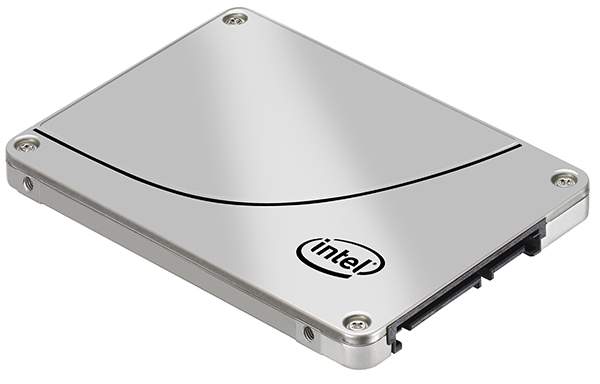The Intel DC S3700 200GB SSD is focused on write-heavy workloads. It utilizes Intel’s High Endurance Technology eMLC NAND to achieve 10 DWPD which is about 3.6PB written. These drives have been on sale from late 2012 and are just starting to see a refresh cycle from the Intel DC S3710 series. The Intel DC S3700 series has had design wins at HP, IBM – Lenovo, Dell, Supermicro and other major OEMs so there are many of these still on the market, most with a huge portion of writes remaining. We have a guide to buying datacenter SSDs used and the Intel S3700 series is extremely popular and often found at a relatively great price. With power loss protection and solid Intel firmware, these drives are the gold standard of their generation in terms of reliability.
Test Configuration
Since we are going to assume the use of already released hardware, we are using a legacy system for testing across the test suite:
- Motherboard: Gigabyte GA-7PESH3
- Processors: Dual Intel Xeon E5-2690 (V2)
- SAS Controller: LSI SAS 3008
- RAM: 64GB DDR3L-1600MHz ECC RDIMMs
- OS SSD: Kingston V300 240GB
We are using a SAS controller so one cannot compare results directly to consumer-driven setups where a SATA SSD is connected to an Intel PCH port. There is a latency penalty for going over the PCIe bus to a controller to SAS. It also is a reason NVMe is going to be a game changer in the enterprise storage space.
Intel DC S3700 200GB SSD Quick Benchmarks
For our quick tests during this part of the series we will just provide the quick benchmarks with only a bit of commentary. The results should be fairly straightforward and we have added a few results for comparison purposes. We did add several SAS drives to the comparison results because they are often competitors due to their generally higher endurance figures.
AS SSD Benchmark
AS SSD is a solid benchmark that does not write compressible data to drives. The result is perhaps one of the best workstation SSD benchmarks available today.
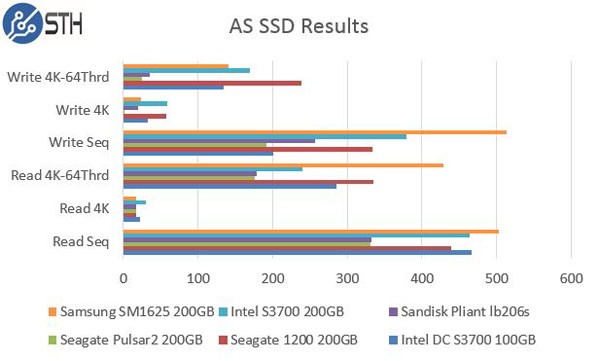
In AS SSD, the Intel DC S3700 200GB drive performs well across the board and is extremely competitive with some of the 200GB SAS offerings we have in the comparison group. The S3700 200GB drive actually tallies top marks in the low queue depth 4K read and write tests.
CrystalDiskMark
CrystalDiskMark is another benchmark which gives non-compressible read/write numbers. This is in contrast to the ATTO Benchmark used by LSI/ Sandforce and its partners when they market a given solid state drive.
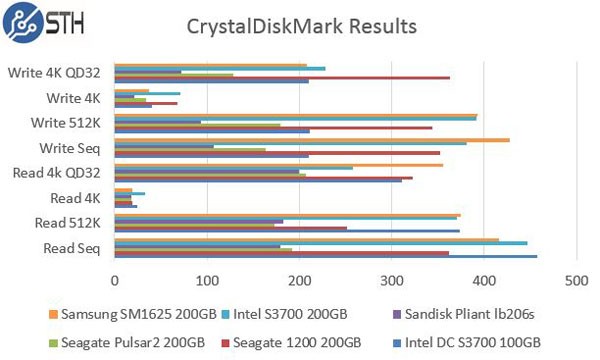
Again, CrystalDiskMark shows low queue depth 4K reads and writes are the Intel S3700’s standout performance indicators. When it comes to the other tests both the Samsung SM1625 (6gbps SAS) and Seagate 1200 200GB drive (12gbps SAS) have strengths in the more sequential and higher queue depth workloads.
ATTO Benchmark
The value of the ATTO benchmark is really to show the best-case scenario. ATTO is known to write highly compressible data to drives, which inflates speeds of controllers that compress data like LSI/ SandForce does prior to writing on a given solid state drive.
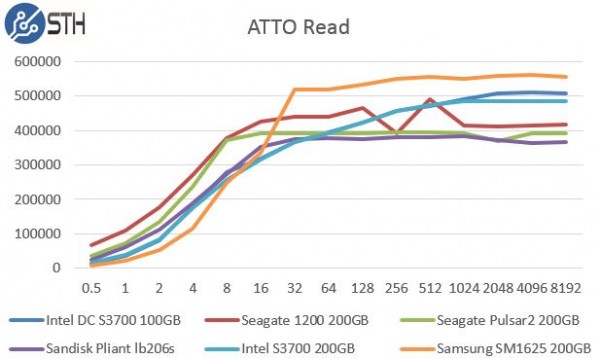
Here we can see the Intel S3700 drives show decent read speeds that steadily increase as the transfer sizes get larger. Several of the SAS SSDs in the test such as the Seagate Pulsar.2, SanDisk/ Pliant lb206s (SLC) and even the Seagate 1200 200GB 12gbps SAS SSD are unable to maintain a significant lead across the spectrum.
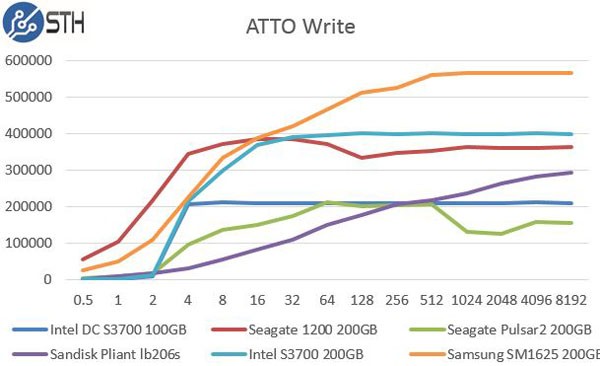
On the ATTO write side we can see the reason the Intel DC S3700 100GB drive is in the charts, its write speed caps at around 200MB/s while moving to the larger 200GB model doubles that speed. One can see that the write optimized SanDisk/ Pliant lb206s is significantly slower than the Intel S3700 across ATTO’s tests.
Conclusion
One can clearly see that there is a significant improvement in the S3700 series moving from the 100GB to 200GB capacities. Sequential write speeds virtually double. With high write endurance, high 4K write speeds, power loss protection and solid firmware, it is easy to see how the Intel DC S3700 has found its way into so many OEM servers. We did see a few of the other drives perform well in this segment also, but the S3700 shows very consistent performance.

